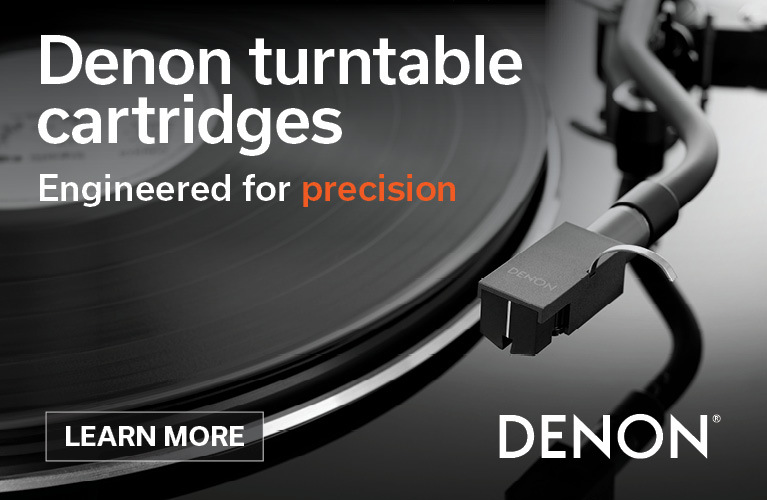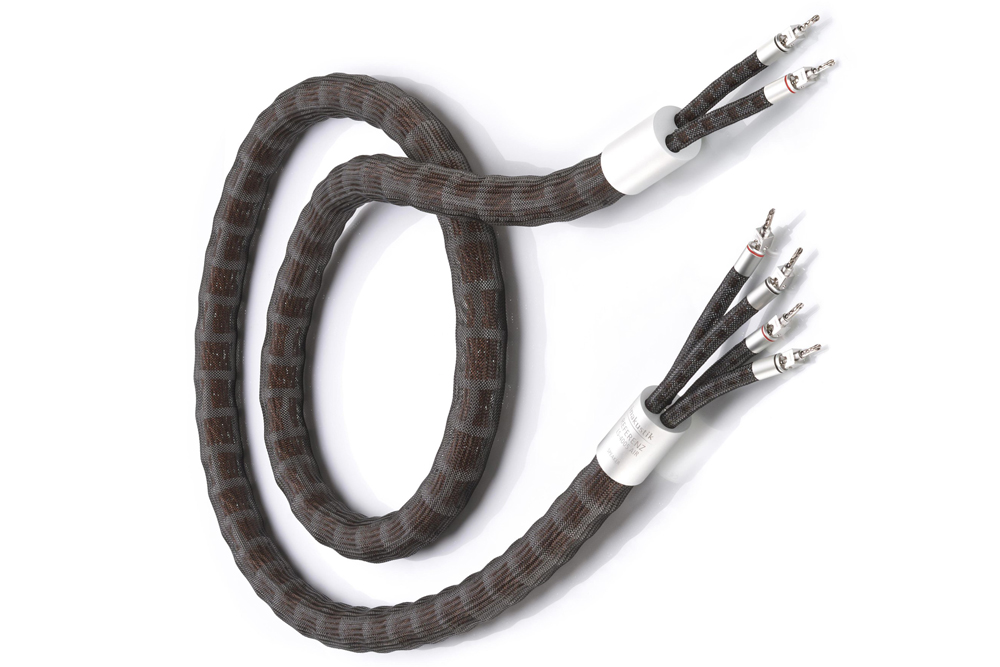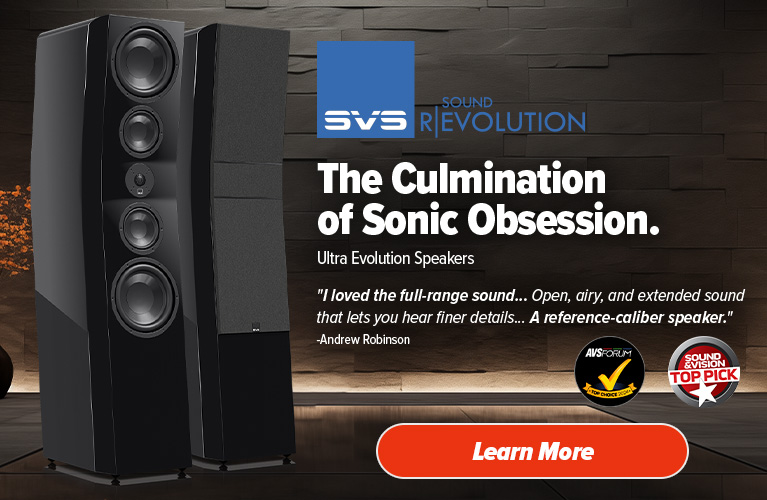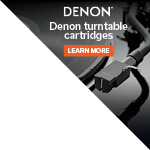Snake oil! Reviewing cables can be both a controversial and simultaneously difficult audio review task. What are we comparing after all? Soke copper and some other copper? The gauge of a wire? Conductor type? Dielectric? The velocity of propagation? Capacitance? What does it all mean in the real world and to your ears? How do the electrical properties of a length of metal affect the way a piece of music sounds? Let’s get stuck in before the hoards gather outside my studio.
Strength in Numbers
in-akustik is a German company, founded in 1977 and based in Ballrechten-Dottingen in the southwest of the country. in-akustik isn’t your typical cable manufacturer. Aside from a wide range of cable products across all price points, the company has its own record label, founded in 1986, and you can buy the titles via the online record store: in-akustik.com/music/ There’s some serious material there.
in-akustik also maintains some very pragmatic and effective partnerships with Primare, Audiovector, and companies such as Stoic (isolation products) and AmbienTech, which manufactures a variety of products from speakers to skirting ducts and architectural fittings. A well-curated portfolio of strategic partners makes this company a bunch of forward-thinking clever cookies.
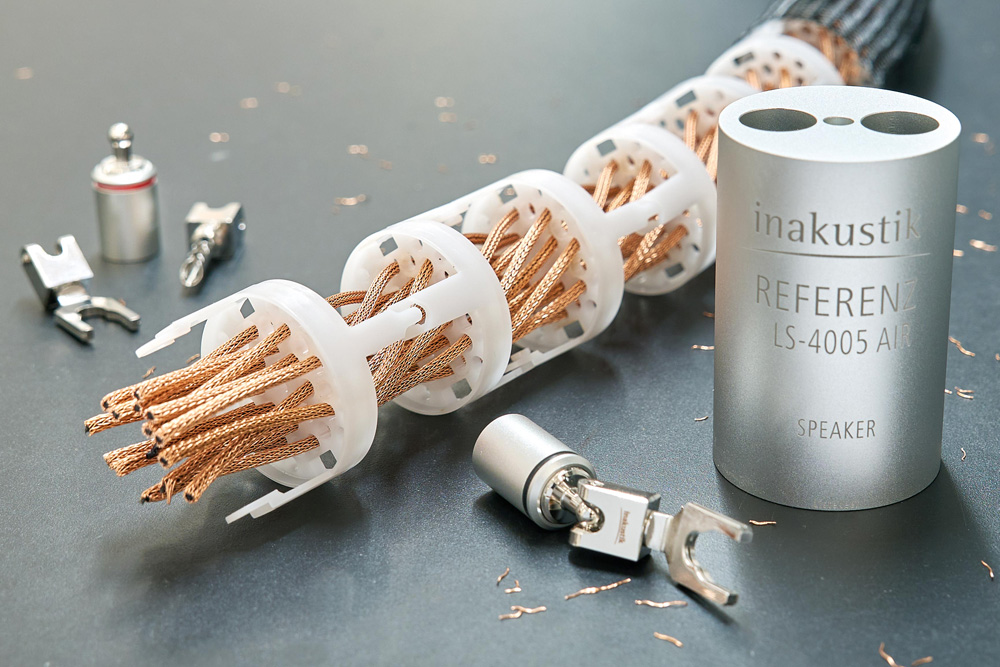
There can be no doubt that German engineering and manufacturing prowess is second to none, so we can start here and pretty much be certain that the product is going to be first-class in its presentation and quality of construction.
The Tech Bit
Let me start by sticking some technical specs in here for the cable in question and then things may become a little more structured. The cable diameter is 40 mm in in-akustik’s ‘Cross Link Super Speed Waveguide’ 16-fold double-layer multicore configuration which is stated as reducing inductance. The conductor type is multi-strand, high-purity, batch-selected OFC copper. The dielectric is air, of course, given the cable name, with in-akustik’s unique ‘Point-to-Point Air Helix’ framework support system separating the conductors across the entire cable length.
The custom in-akustik built connectors are mounted onto a solid metal housing while the contact material is said to be rhodium coated beryllium copper for the banana plugs and tellurium copper for the 360-degree adjustable spades (as per review sample). No solder is used, as in-akustik uses a 1.5 tonne pressure bond between the conductors and connectors.
So let’s start with cable diameter. This affects several factors at play within the cable itself:
1. Current carrying capacity. Thicker cables with larger cross sections allow more electrons to flow, which in turn reduces resistance which allows the cable to handle higher currents without overheating. Wider pipe, more water, less friction. So, let’s go back to the part about high current. Do speaker cables carry high currents? No, they don’t, so with measurements in mA or tens of amps at most, we can assume speaker cables do not require, nor benefit largely from large cross-sectional design.
2. Voltage drop. Thinner cable equals higher resistance, which in turn means a voltage drop over large distances. Are you running your speaker cable over a long distance? Probably not. If you are, then yes, maybe you will benefit from a larger cross-section. But, you probably have a huge house and a cave at the end for your Batmobile and… You get the picture. The distance required to cause a significant drop for your speakers is greater than you will incur.
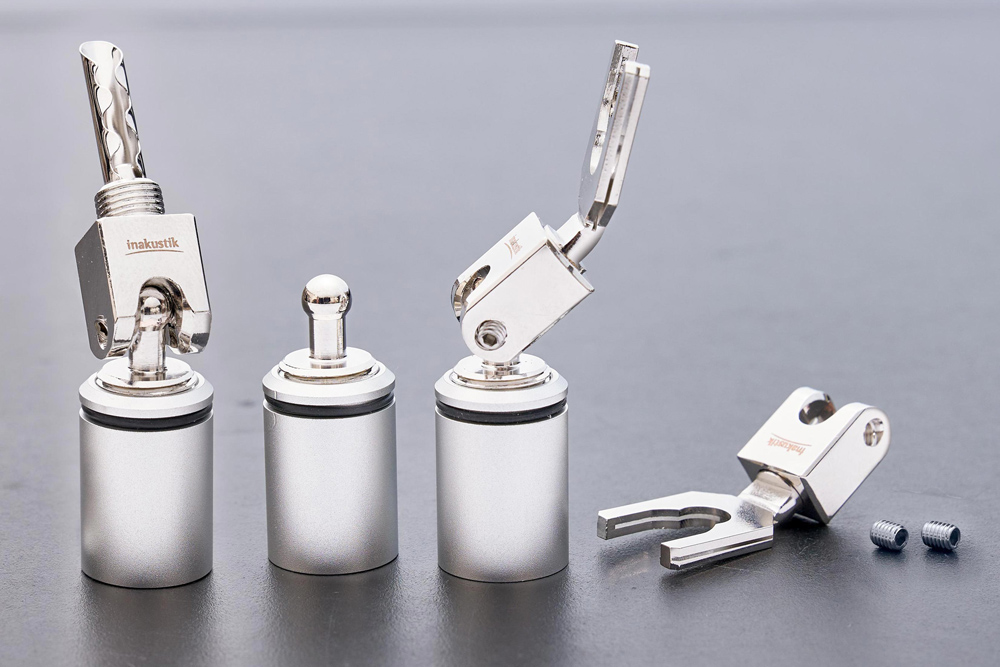
So that’s that then. What about material? Yup very important. So copper is one of the most efficient conductors we know of in normal operating environments. Superconductors require a set of conditions that would kill you. So, forget it. For the super nerds (like me) who need to know, you will need to get these materials down to a temperature of below -70 degrees to work as intended.
The Silver Bullet?
So, what about silver? Silver is around 6% more efficient than copper and way, way more expensive. You’ll need to look at the latest commodity prices but I’d say for 6% increased efficiency, you’d be looking at near a hundred times the cost. Is it worth it? Subjectively, no. Simply no. Unless… You are working in the scientific field with sensitivities that are imperative to accomplish. In your room at home with whatever level of treatment you have, it is not enough to achieve a discernible difference. Your walls and other surfaces are reflecting so much information, that you would need an anechoic chamber and very accurately calibrated listening devices to sense the slightest difference. [Editor – it should be mentioned here that many audiophiles consistently find some silver cables can sound a little bright within the context of some systems.]
So, for perspective. The copper version of this cable is AU$14,500 and the pure silver version is $65,000. So not one hundred times the price? Or not a hundred times less expensive? Why? Labour, marketing, market cost. Those are facts we have to accept.
So, let’s get to the contact housing and material. The rhodium coating is interesting, and I’m sure in time there will be many more materials that will evolve here as we have gone from gold to rhodium. Does it matter? Yes. But not for the reasons you may think. Contacts require a clean mating, and corrosion is one of the worst detractors from the performance of any material. Copper is a great conductor until it begins to oxidise and then it isn’t so great anymore. So, gold plating and rhodium plating are indeed a great idea for the longevity of performance. It will not make things sound better, just make it work as intended for way longer. That’s good for preserving your investment.
So, what about this double-layer, multicore fandango? Strength. It’s a bit like a solid core wire snapping more easily when it’s bent a lot as opposed to twisted wire being way more durable and flexible. There are more factors, but we’ll get to that. That’s also a good thing though. So, a cable that doesn’t corrode, is flexible and strong, and has great electrical qualities. We are off to a good start.
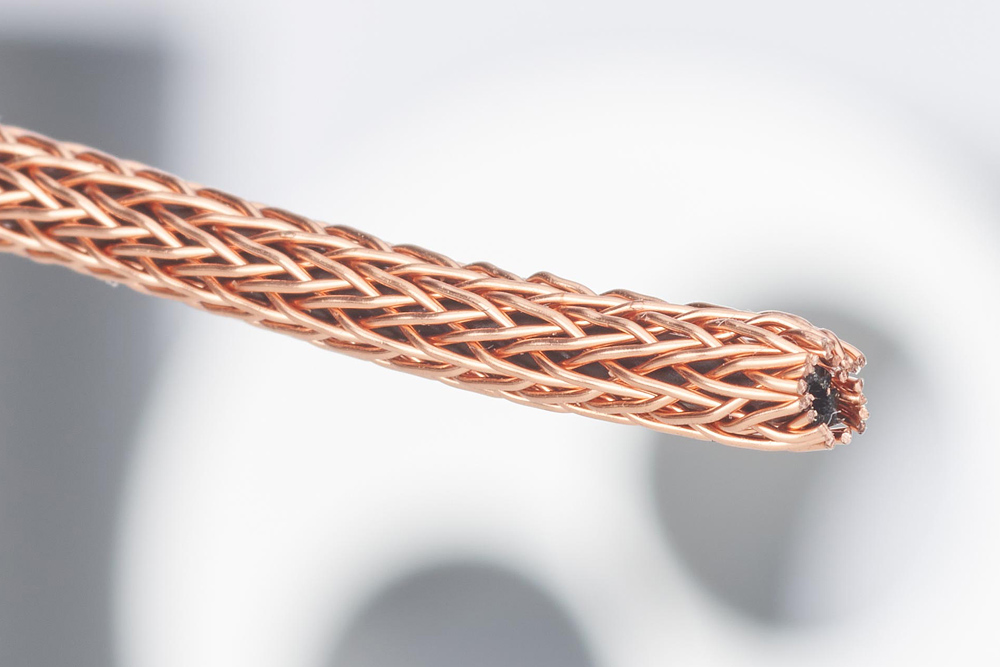
The dielectric. OK, this is really important. Is there a “best dielectric”? No. This all depends on the circumstance. In capacitors, we look for dielectric constant, or the ability to store electrical energy. Dielectric strength indicates how much voltage a material can withstand before conducting. There are many factors that affect insulation, RF, and more.
A perfect vacuum would boast the highest dielectric strength, but this might be a wee bit impractical. Ceramics, polymers, and different gases such as hexafluoride, all have excellent dielectric strength. Teflon and polyethylene are widely used in cable designs. So, what about something we can actually live with? Air. Air is a great dielectric and mostly, so far, it’s free! Air has low loss, but poor capacitance and voltage handling. So, pretty good for speaker cable, right? Yes.
So, does the dielectric affect the sound of your system? From 20 Hz to 20 KHz, there is, most likely “in your environment” little to no benefit. But let’s continue. What about capacitance? This in some ways could be the most significant factor in sound quality being affected by the cable. Longer cables mean an increase in capacitance, or the ability to hold charge. So, capacitance then can create opposition to high-frequency signals, causing them to weaken as they travel along the cable, in turn leading to a loss of high frequencies in speaker cables and distortion in instrument cables. So, this then reduces signal integrity and with speaker cables carrying delicate audio signals with a wide range of frequencies, the issue of capacitance may well be the single biggest factor in reduced audio quality in hi-fi.
So, short cable runs, cable gauges, and distance between conductors are important. Funnily enough, the ‘AIR Helix’ design in these in-akustik cables places the conductors pretty far apart. Are we seeing some correlations here?
Now, For The Good Part
So now we have some very basic principles and a short brief of the techy stuff, let’s see how it all comes together. So, the cables are huge, they look like a snake, a big black python! I have seen people take a step back when I opened the box. And the quality? First class, as I said before. These are built with all the German attention to detail and fastidious craftsmanship you’d expect.
The cable design is clear to see, and the contacts (spades in this case) are going to last as long as the pyramids. The fit and finish is immaculate. No fuss, no-nonsense, but serious bling without shouting.
Do the LS-4005 AIR sound any good? Well, here’s the bit we all come to mull over. Cables don’t sound like anything. They have electrical properties only. So, with a cable run of only two or three meters, am I going to hear night and day compared to my Nordost cable? I’m running Frey by the way. The answer is no. I didn’t hear any differences.
What did I hear then? I heard a great cohesive, dynamic sound as I expected from my system. I’ll get to that.
I have cables with low capacitance and what Nordost claims is a pretty fast signal transmission. Plus, I live in the real world. I’m also a pretty good sound engineer and acoustic designer and my house is treated to quite a degree. Things sound good. So, what’s wrong? Nothing. These cables did exactly the job they were meant to, they maintained my system’s integrity, and everything sounded great. Simply.
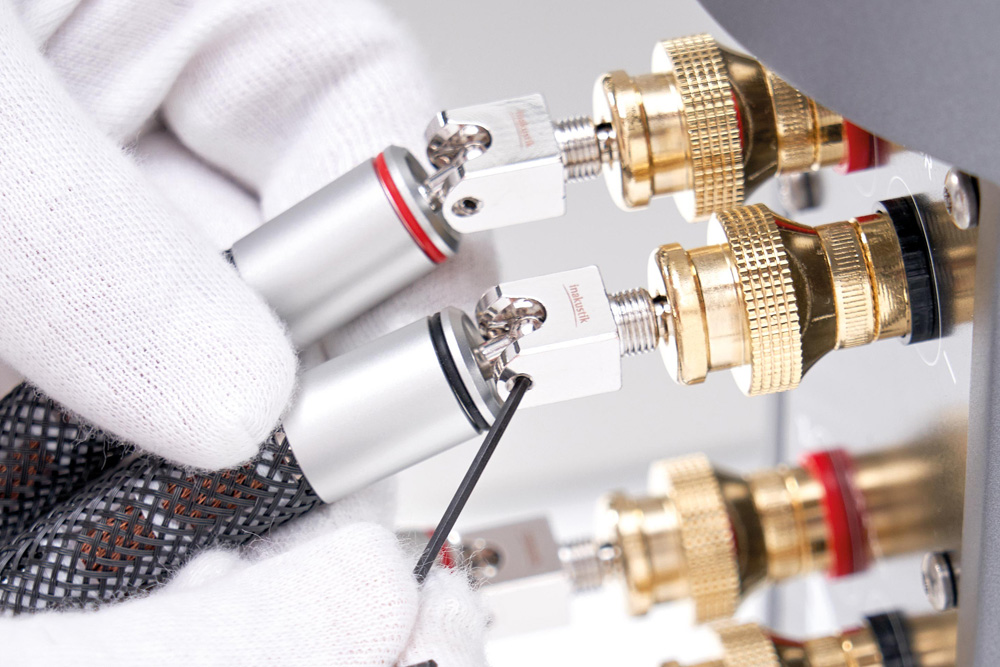
What they do that most people fail to take the time to understand is, that they maintain the signal integrity by reducing capacitance and the unwelcome effects it has on signal integrity. They will do that for decades. They cost a lot because they were built to last and not corrode, to keep doing this job without compromise. Put some cheap speaker wire in place and see how quickly it deteriorates over a relatively short time. How it breaks and frays. How it darkens and changes colour and how you begin to hear crackles and dropouts. That will not happen with any in-akustik offering.
Let’s not be silly and think that every new cable is going to keep making things sound like you have never heard before. There are more systems being made every day that need more cables, and more people who want a better standard of experience from that hard-earned and well-deserved investment.
Should I take these cables and even my own system into an anechoic chamber and listen to nothing but what is coming out of the speakers? Would I then hear a difference between cables? Yes, I would. It may not be prominent in all frequencies and tracks, but the electrical properties do not lie. Capacitance is in my opinion the biggest factor affecting real-world home audio systems with realistic cable runs, and I have already been using in-akustik cables in my system because they offer what, I believe, to be great performance at realistic price points.
Bird On The Wire
So, what do we say here with regards to music choices and listening experience? Listening to Ricki Lee Jones' “The Last Chance Texaco”, all the nuances are there. The dynamics of the acoustic guitar, and the ambiance of the melancholy that she conveys all come across as the instruments paint sonic pictures with clever use of her voice as effect. There’s a real sense of space and clarity, but then again that was the case before I switched in these cables.
“Love Don’t Bother Me” by Norwegian Rockers Stage Dolls is a power ballad masterpiece with huge dynamics that scream “bring back the 80s”. The decay on the snare drum is eternal, the snap demanding your attention. The keys float effortlessly through the mix and Torstein Flakne’s rasp takes you back in time to a world of hair, more hair, and tight jeans. The track is well-produced and it comes across with such beauty. It’s a big song with a big sound. No disappointment here then.
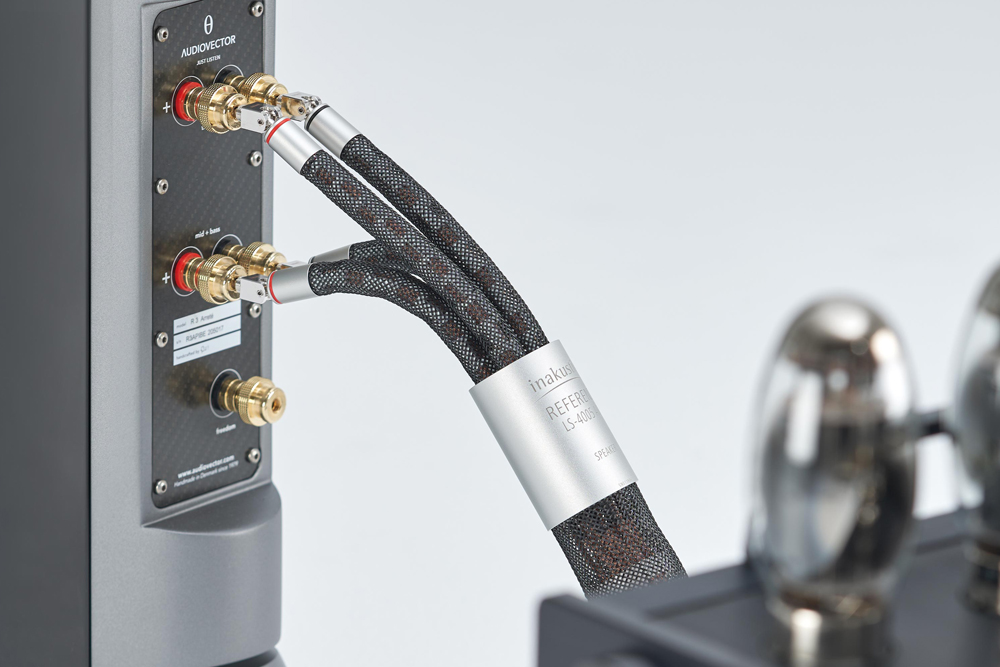
Did these cables present more detail than my current setup? I’m afraid I can’t suggest such differences in my listening environment but again, nobody who understands the tech would suggest that the sound just keeps getting better infinitely because the dollars increase. I’d be writing for the sake of writing about my musical adventures, but the fact remains that these cables are extremely well made, of the highest quality and they do what you’d expect.
Conclusions?
At present, the performance I achieve from my own cable loom – which includes an in-akustik Exzellenz interconnect cable among other brands – is totally suited to my own music tastes. If I was looking for something of this calibre and had the readies and a clear perception of improved performance in my space, then I’d buy them.
You cannot view expensive cables as eternal performance improvements. They are in most cases a luxury item, and in the majority of cases, built to maintain their performance for longer than you will have the ability to appreciate that. Abbey Road Studios uses cable for their monitors which is eye-wateringly expensive, and most pro environments at that level, invest a great sum in the components they employ.
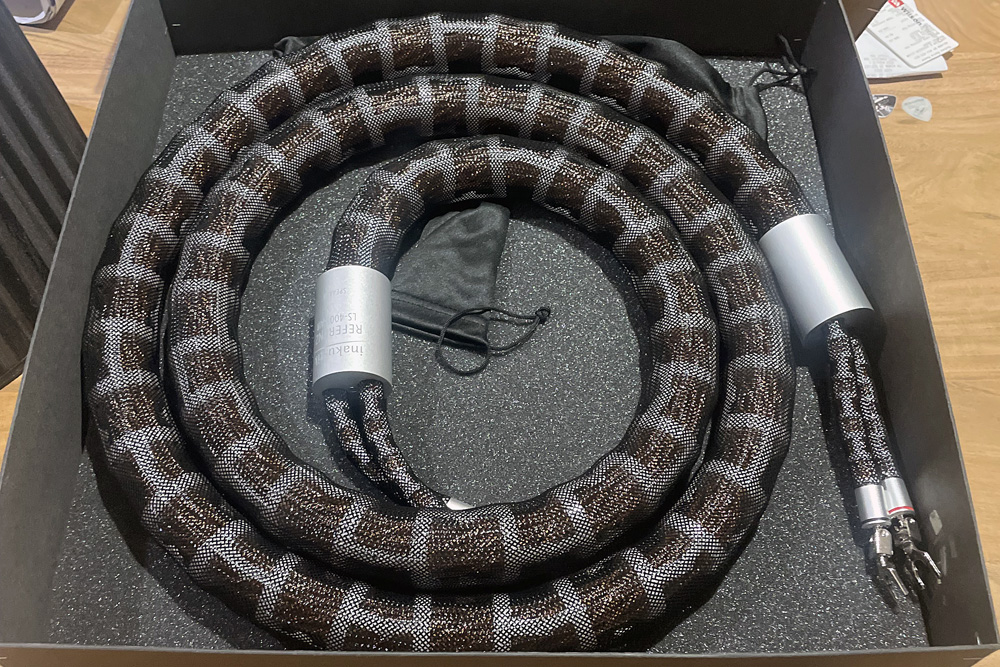
In environments that benefit from such solutions and, indeed, have the ability to convey such quality and where you can hear the subtle differences due to their meticulous acoustic environments and gear choices, you will undoubtedly understand the reasons behind these choices, should you be fortunate enough to experience such wonder.
in-akustik makes a great product at every price point. So, for those who don’t have deep enough pockets, which is many of us, you can pick up another in-akustik offering at a more realistic price. You can then relish the fact that those other models are made with the same attention to quality control and performance as the esoteric offerings, such as this LS-4005 AIR. Just for the wow factor I already miss them.
Tolle Arbeit, in-akustik und vielen Dank für die Erfahrung.
… Barry J. Johnston
www.soundstageaustralia.com
Associated Equipment
- Speakers — Bowers and Wilkins Nautilus 802, Yamaha NS1000 – 2 Pairs – Modified, KEF LSX, REL HT1205 x 2, JBL 4328 LSR, Sony subwoofer, 2 x REL Acoustics No.31 subwoofers
- Amplifier — Mark Levinson No.531H Monoblocks, Quad 606 Power amp, Sansui AU555 Integrated
- Preamplifier — PrimaLuna EVO 400
- Sources — Digital: Gryphon Scorpio, Metronome Technologie Le Player 4+, Simaudio Moon HAD230, Marantz PMD-340, (MacBook Pro 15 - Audirvana, Tidal, Spotify) Sony PHA3, Sony NW ZX2, Sony PCM2600
- Analogue: Marantz TT-15S1, Clearaudio Satisfy Tonearm, Clearaudio Virtuoso Wood MKII, Whest P.20, LINN LP12, Stax UA7CF Tonearm, Audio Technica LPW40WN
- Cables — Nordost Frey, inakustik Exzellenz Balanced interconnect, Isotek IEC, various custom interconnects
- Audio Rack — Custom – Noizy Head , Noizy Head custom iso platforms
- Miscellaneous — Audio Technica AT-AWAS, Focal Listen, Audio Technica MSR7, Mac Pro, Focusrite Scarlett 18i20, Vicoustic room treatment, and various supporting cast
in-akustik Referenz LS-4005 AIR Loudspeaker Cable
Price: AU$14,500 (3m pair)
Australian Warranty: Five Years
Australian Distributor: Audio Marketing
+61 2 9882 3877
www.audiomarketing.com.au
in-akustik GmbH & Co. KG
Untermatten 12-14
79282 Ballrechten-Dottingen
Germany
+49 7634 5610-0
www.in-akustik.de

